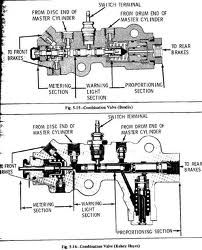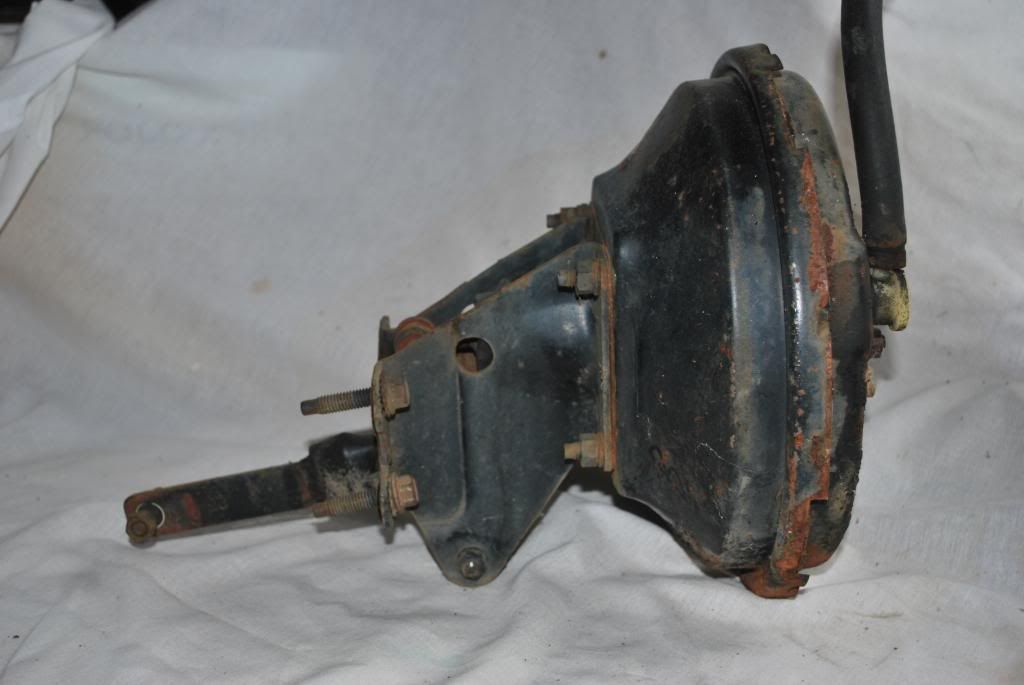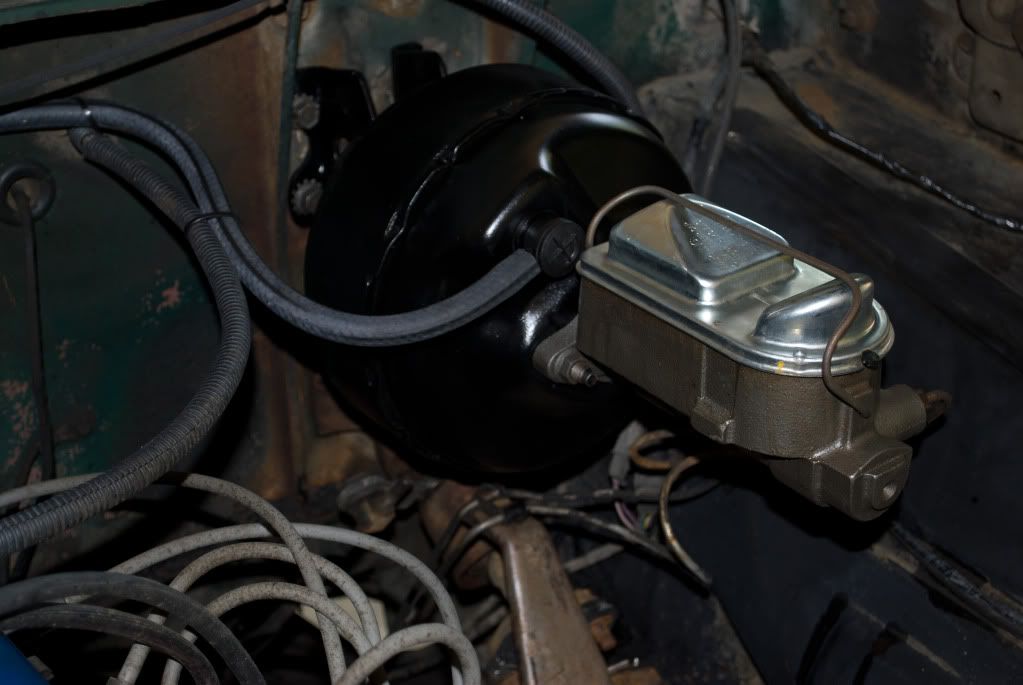HIO Silver wrote:The way to adjust a prop valve is to do panic stops where the fronts lock up slightly before the rears lock up... No gauges needed.
If you're just a person behind the wheel running the vehicle up to speed and then slamming the brakes on, you can't see (from the interior of the vehicle) if the front wheels locked up ahead of the rears or, if the fronts and rears locked up at the same time or, if the rears locked up before the fronts, or if the fronts locked up but the rears didn't lock up at all. With no gauges to be able to see the line pressures of the primary vs. secondary side and have a specific pressure setting to dial the man. prop. valve to, you would need a by-stander to observe what wheels are turning or not turning, and when, during the skid.
Outside of not having pressure gauges and a known pressure value to dial the man. prop. valve to, about the only way to have an idea of what is or isn't locking up and when would be to place a white reference mark on the sidewall of the front and rear tires --sort of like a drag racer would do to determine how much the tire is slipping off the line before the tire finally hooks up and grabs, only in this case, it would be the opposite where you are observing the tires turning and then determining when they began to skid. This situation would be best if the by-stander is videoing the event so that it can be played back in slow motion so the white reference marks on the tires can be observed to see the timing of if the wheels are locking up, and when, in relation to each other.
I'm not a stranger to manually-adjustable proportioning valves. I used to install them and have installed them on several vehicles but I don't use them anymore. The proportioning circuit of the factory disc/drum combination valve is already calibrated to operate at the correct pressure level so no adjustment is needed on them. They also have a metering circuit for the primary (front) brakes which the Wilwood valve doesn't come with and it also has a pressure differential valve to sense for a brake malfunction that the Wilwood valve also doesn't have.
Some brake conversions I've done where I installed manually-adjustable proportioning valves:
'56 Chevy Belair I did the tubing work on and the addition of the man. prop. valve.
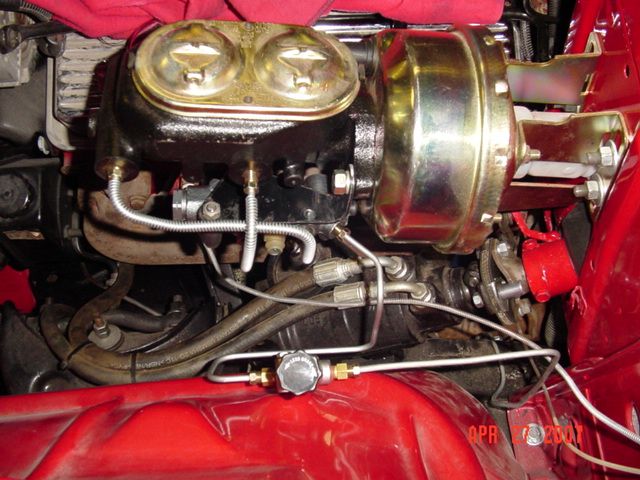
'65 F-100 I converted from a single pot (suicide MC) to a dual reservoir MC.
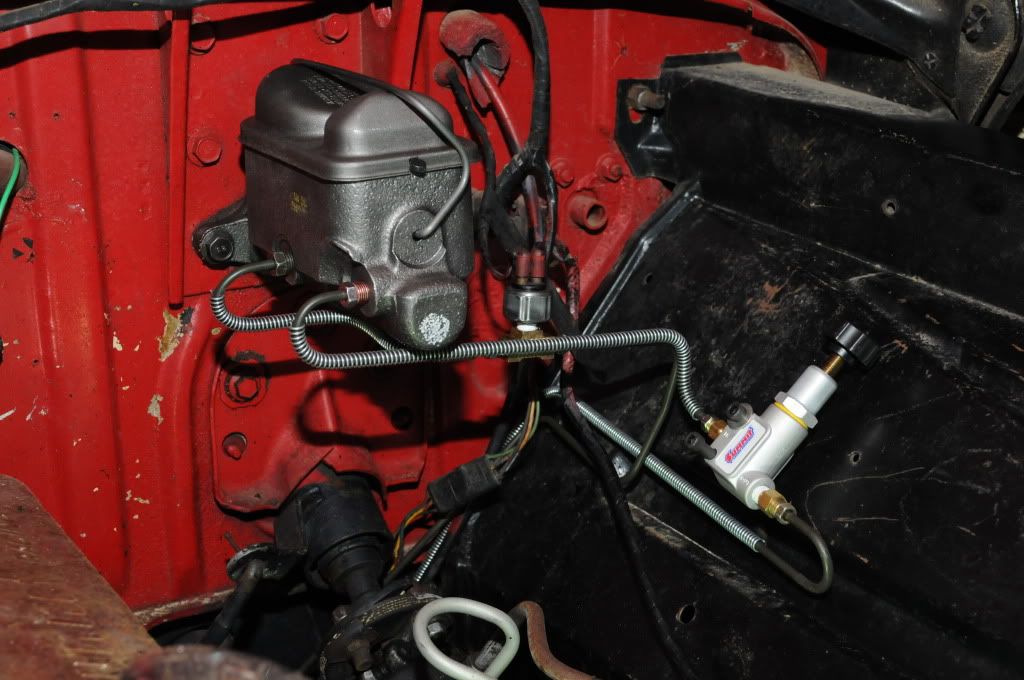
Late model ('96 Ford Explorer) 4-wheel disc MC, manual prop. valve & hydraulic clutch MC I was in the process of installing on a '68 Mustang.
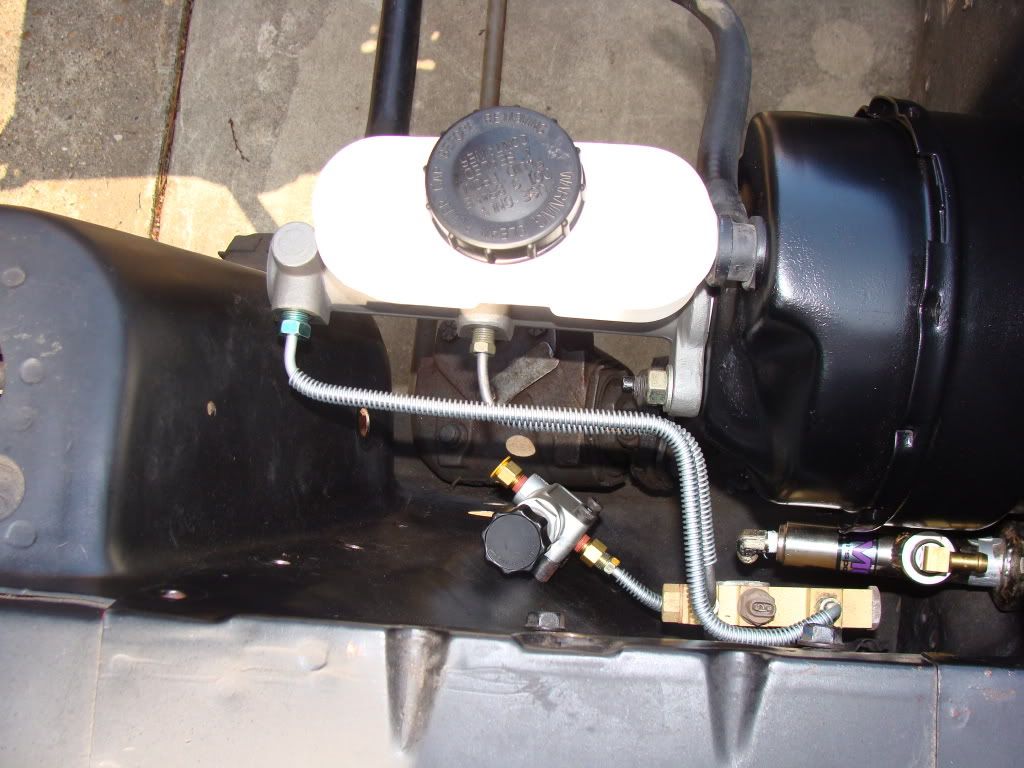
2.3L Fox Mustang power brake booster, '99 SN95 V6 Mustang 4-wheel disc MC and man. prop. valve I installed in a '65 Mustang fastback.
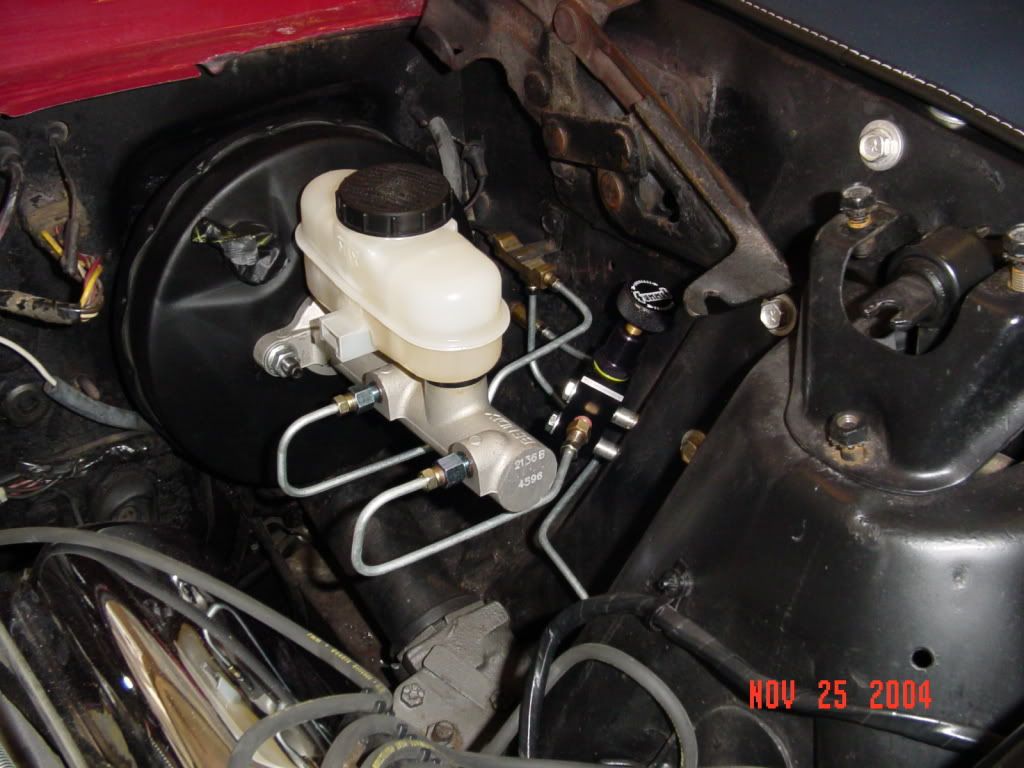
'98 Ford Winstar 4-wheel disc MC on a 2.3L Fox Mustang booster & Wilwood man. prop. valve I installed in a '65 Mustang.
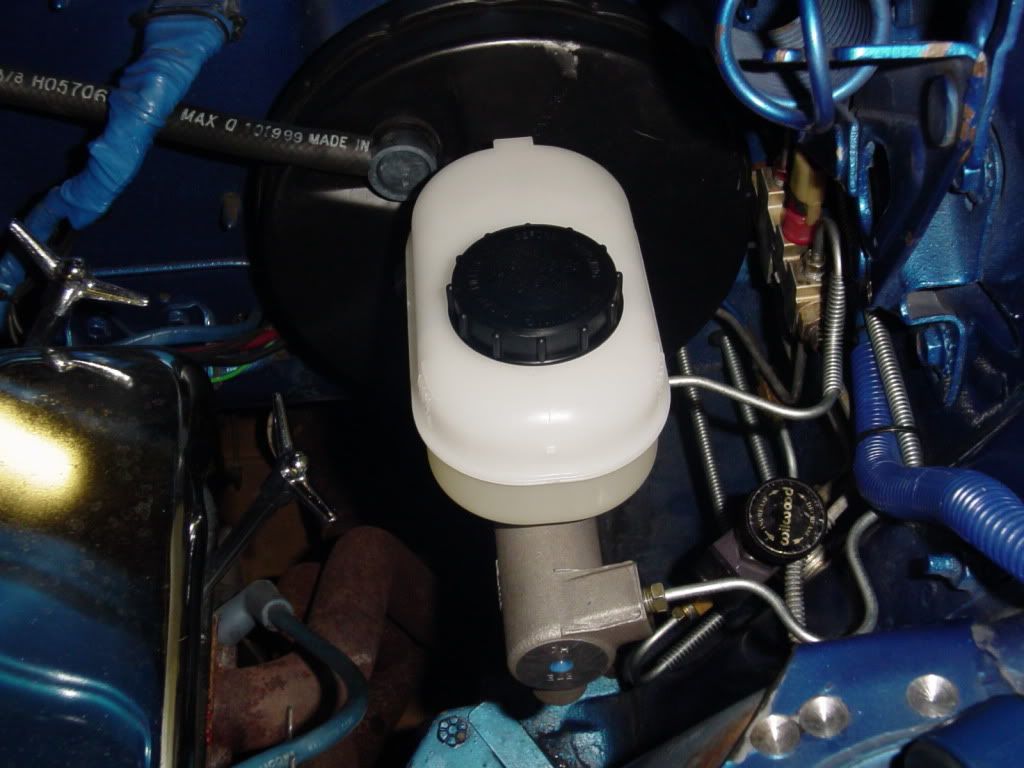
The previous photos were taken several years ago. One of them was from 10 years ago. The most recent brake work I've done (last year) was on this '67 Mustang. It had 4-wheel 4-lug drums. I converted the front to '75-'80 Granada 5-lug discs and replaced the anemic Ford 7-1/4" rear end with a 5-lug Ford 8-inch drum brake rear. I installed a new dual MC, fabbed the brake lines and installed the stock disc/drum Ford combination valve with no man. prop. valve.
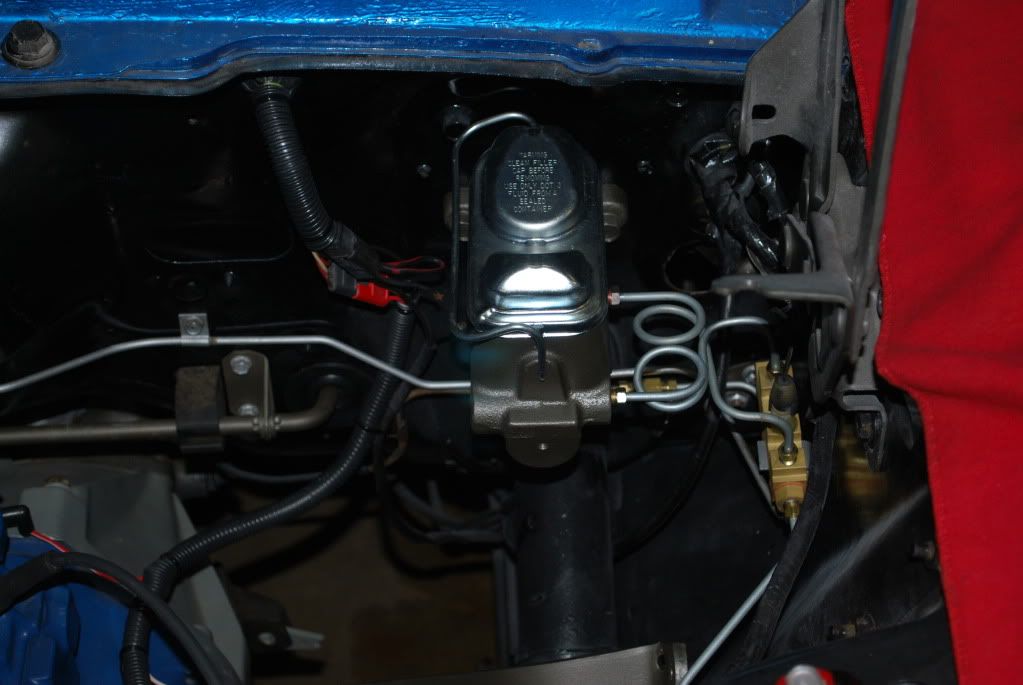
You may notice in several of the photos that you can see the stock disc/drum combination valve being use along with the manual proportioning valve. I don't fool with the man. prop. valves anymore because the stock combination valves are really all that's needed but, IF you were going to run this combination for the benefits of the metering and pressure differential safety feature the stock valves offer, it's imperative that you gut the secondary side of the stock disc/drum combination valve to remove the factory proportioning valve spool and spring. If you do not, you will have TWO proportioning valves, in series, working against each other.
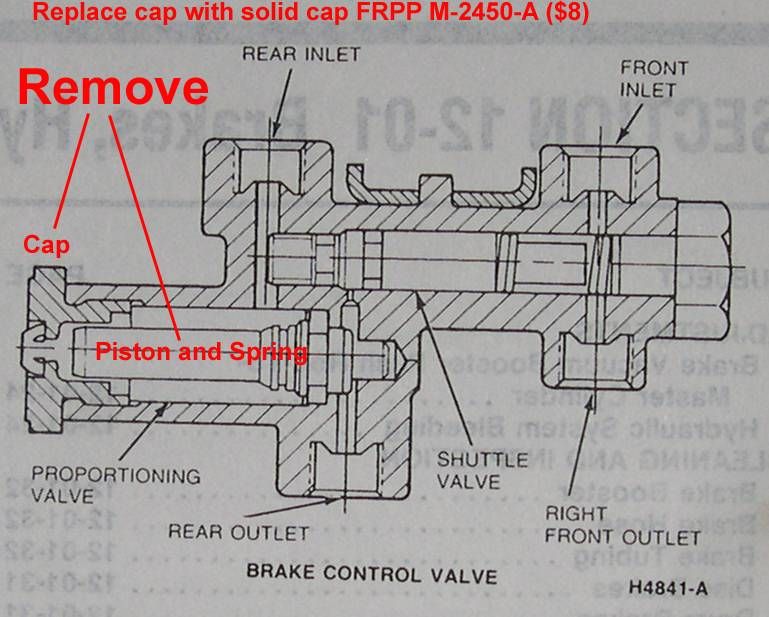
Stock proportioning components to remove from the factory disc/drum combination valve.
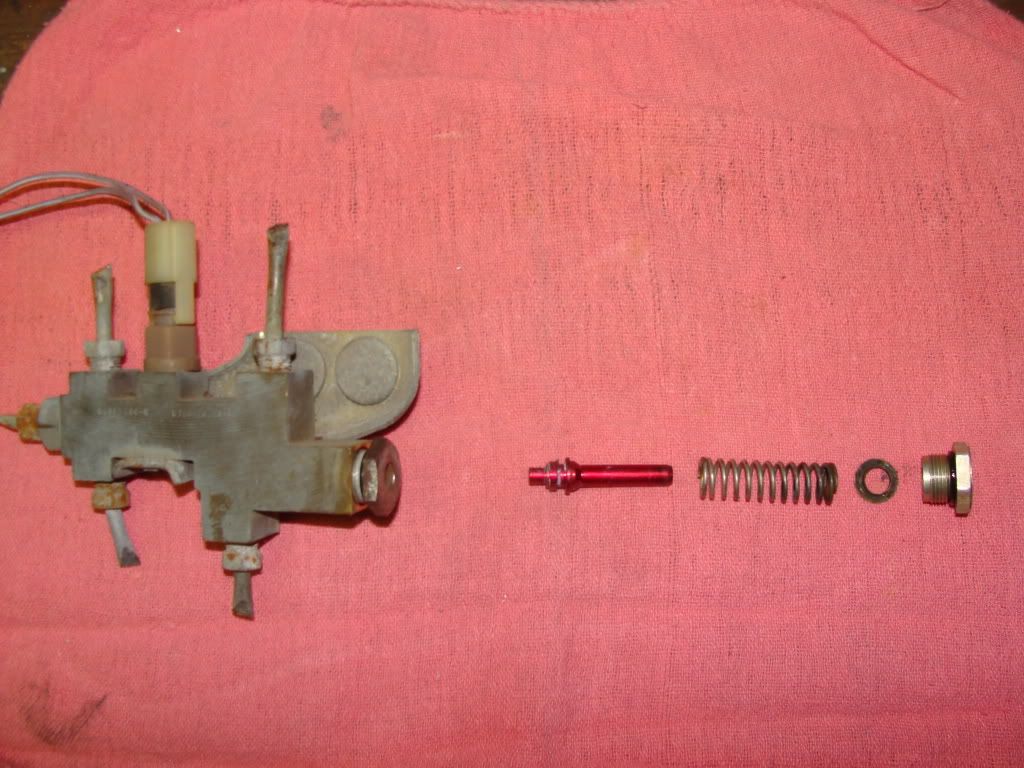
If the stock combination valve has a black rubber plug in the center of the cap, the cap will have to be replaced with a solid cap. Otherwise, the first time the brakes are applied the pressure of the brake fluid, inside the valve body, will blow the rubber plug out and brake fluid will spray everywhere.
Cap with black rubber plug on left, solid cap on right.
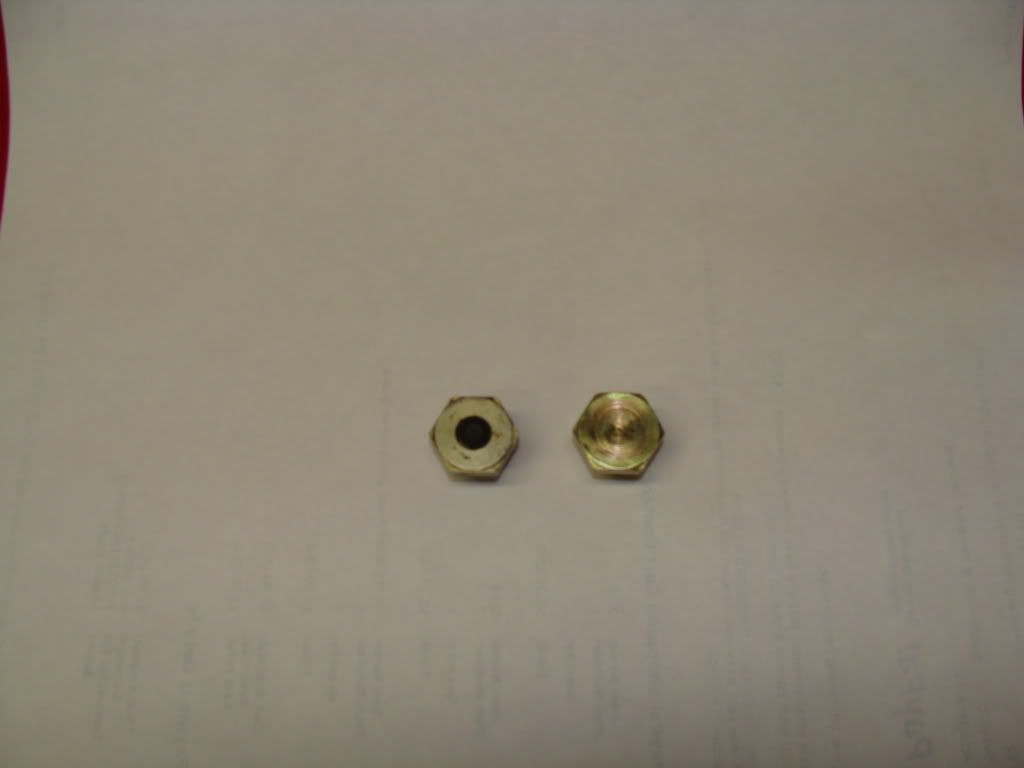
I will say the Wilwood valve you have is a cool looking piece and that you did a very good job of making some professional looking lines.





